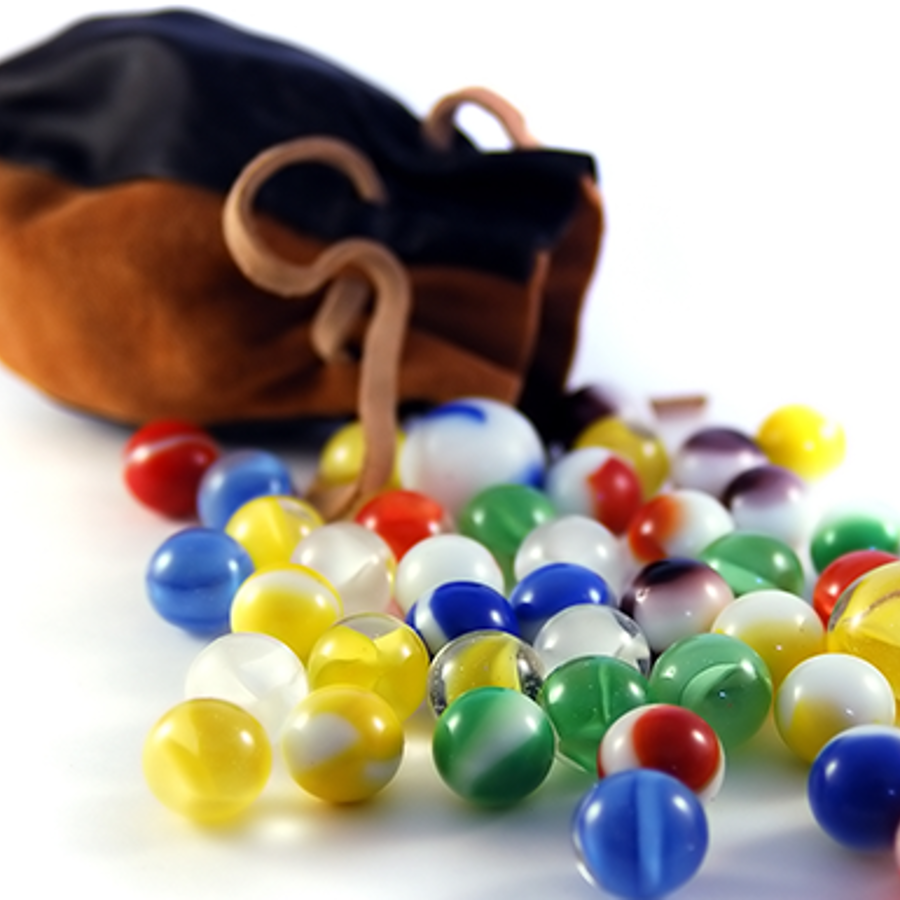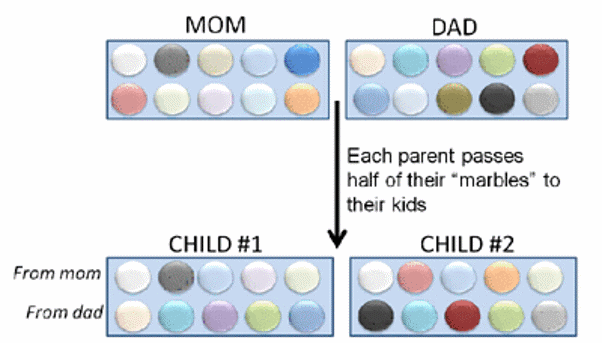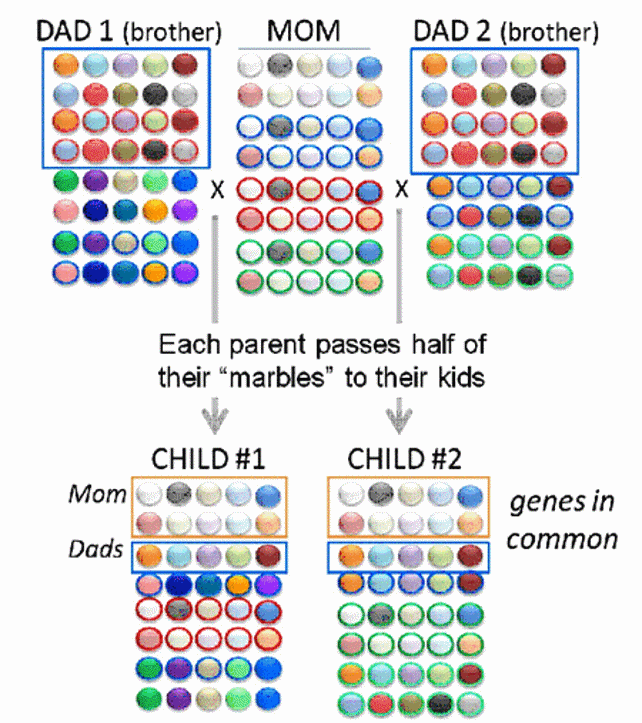
How related are three-fourths siblings?
September 29, 2011

- Related Topics:
- Complicated family trees,
- Relatedness
A curious adult from Canada asks:
"I have four children with two different fathers that were brothers (one died in a logging accident). If genes are handed down randomly from parents - 1/2 of the mom’s and 1/2 of the dad’s, I am wondering how genetically similar my older daughter is to her younger siblings as they are to each other. They have exactly the same ancestors on both sides because their fathers are brothers and I’m their mother."
The simple answer is that they are somewhere between full and half siblings. They are three quarter siblings.
In math terms that means they are 37.5% related. This is halfway between the 50% of full siblings and the 25% of half siblings.
To understand where these numbers came from, we need to take a step back and look at how people inherit genes from their parents. I think then you'll see why your children from different fathers who are brothers are more related than half siblings but less than full siblings.
Relatedness of Siblings
As you already said, we get half our genes from each of our biological parents. The half that we get is randomly chosen. This is actually why siblings are 50% related.
To understand this more clearly, let's look at a simpler example. Imagine you have 10 marbles in front of you and with your eyes closed you have to give 5 to someone.
After recording which marbles they got, the person then gives those 5 back to you. Now you have to give 5 marbles to someone else.
What are the odds that you will pick the same 5 marbles? The odds are very much against you. In fact they are 1 out of 252, or 0.4%.
This is sort of what it is like when you pass on genes. You pass half of them to each child but the half that gets passed is chosen at random. So it is very unlikely that siblings get the exact same set of genes from a parent.
In the picture below, I have taken the example a little further to explain why siblings are 50% related. In the picture, we have a mom and a dad. They each have 10 marbles and they have to give 5 marbles to each one of their children.

As you'd expect, each child shares five marbles with each parent. But notice that they also share five marbles with each other. The five marbles they share are a mix of some of mom's and some of dad's.
This is a good proxy for what happens when we pass our genes down to our kids. Except that instead of giving 5 marbles we pass on 20,000 or so genes*.
This is so many genes that it is essentially impossible for a parent to pass the exact same set of genes to two of their children. In fact, with numbers this big, odds are that the kids will only have about 10,000 of these genes in common from each parent. The other 10,000 will not be shared.
Because each child gets 10,000 shared genes from each parent (and 10,000 unique ones), they will share 20,000 out of 40,000. This is where the 50% related comes from for full siblings.
It is a different story with half siblings. Half siblings share one parent but have a different second parent. So they will not get the same genes from the parent they don’t share.
We'll say they share 0 out of these 20,000 genes. That leaves only the 20,000 genes from the shared parent. And since they will only share half of those genes, this means they share 10,000 out of 40,000 genes. In other words, they are 25% related.
Relatedness of Three-Fourth Siblings
Three-fourth siblings share one parent, but have different second parents that are siblings. For example, two children are considered three-fourths siblings if they share the same mom, but have different dads that are full brothers. The same is true for children that share the same dad and have moms that are full sisters.
OK so we know the drill with the shared parent. Each child will share about 10,000 genes with their siblings because of the shared parent. But what about the different parents who are brothers? This is where it gets a little more interesting.
I've drawn out a picture below again using marbles. This time each of the three parents has 40 marbles to pass on. I hope it makes the explanation clearer.

As you can see, the two fathers are 50% related to each other because they are siblings (outlined in blue). So in the pictures they share 20 out of their 40 marbles. Remember in reality they share 20,000 or so genes.
Notice in the picture that each child gets 20 marbles from mom, ten of which they share (outlined in orange). Just what we've come to expect.
The kids also get 20 from each dad. But since the dads are 50% related, they'll pass down 10 shared genes. The two kids will share half of these or 5 marbles (outlined in blue).
In gene terms, the dads will each pass 10,000 shared genes to each of their children. Again, each child will share half of them or 5,000 genes.
To determine the overall relatedness of three-fourth siblings, we add the contribution from the mom plus the contribution of the dads. This is 10,000 genes (mom) plus 5,000 genes (dad) or 15,000 genes.
Since each child gets a total of 40,000 genes, the genes that they share with their three-fourth sibling is 15,000 genes divided by 40,000 genes. In other words, 37.5%.
*It is actually a bit more complicated than this. We each have two copies of our 20,000 or so genes and we pass one copy of each separate gene to our kids. To simplify things, I lumped all of these together for a total of 40,000 genes.

Author: Cecil Benitez
When this answer was published in 2011, Cecil was a Ph.D. candidate in the Department of Developmental Biology, studying endocrine development of the pancreas in Seung Kim's laboratory. Cecil wrote this answer while participating in the Stanford at The Tech program.
 Skip Navigation
Skip Navigation
